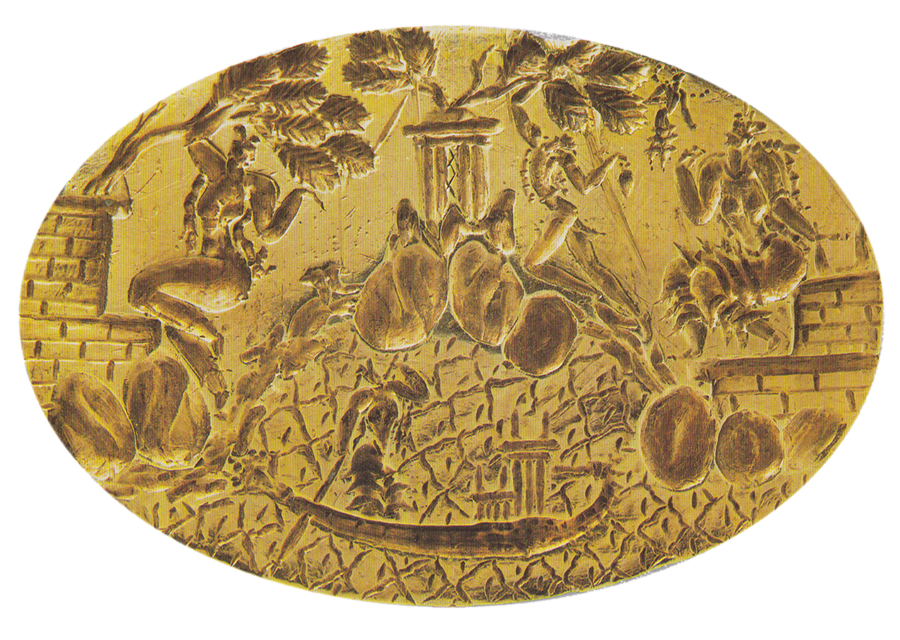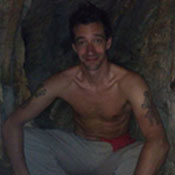|
It seems reasonable, at the beginning of this Archaic Visions adventure, to recede back to a time when human symbolic culture was just dawning. Contrary to popular opinion, this was not the European Upper Palaeolithic: palaeoarchaeology has since the 1980s steadily been revealing a wealth of artefacts disclosing the emergence of symbolism, ritual and vision in Southern Africa in the Middle Palaeolithic. One such site is Tsodilo, a sacred locale in continuous usage for perhaps 24,000 years and possibly the site of the world's oldest known ritual. This essay has been adapted for an article originally written for a Ugandan arts magazine, and was more of a meditation on the age of the site than an in-depth study. In the northwest of Botswana’s Kalahari Desert, beyond the famous Okavango Delta, lies a small range of parched hills called Tsodilo, a UNESCO World Heritage site and perhaps one of the oldest sacred places in the world. For it is here, and in a few other sites dotted around Southern Africa, that we can come to know ourselves as human beings, through our shared origins in the soils of Africa.
4 Comments
The Land of the Ever-Living is a perennial image across the world's mythologies, and Celtic traditions of northwest Europe are no exception. Indeed in surviving Welsh and British traditions, journeys to such lands form the essential theme of the majority of legends, the most famous of which is the Arthurian Avalon. First recorded in Geoffrey of Monmouth's Historia Regum Britanniae, Avalon discloses a much more ancient image than the High Middle Age date of Monmouth's account would imply.
The Otherworld is a continuously-appearing theme in Celtic mythology: in the medieval Welsh collection of myths entitled the Mabinogion alone, we see a journey to Annwn, the Land of the Ever-Living in the local traditions of Dyfed; the misty enchanted realm of Llwyd ap Cil Coed in which the protagonists are imprisoned; and a sailing to Ireland, presented as a magical land. Other poems tell of fateful journeys to Caer Sidi – Mound Fortress – from which only seven return alive, and of Ceridwen's island, from which only Taliesin was able to escape. On the far eastern coast of Crete, there lies in a remote bay the Minoan town of Zakros, a major Bronze Age urban centre. First discovered in 1902, the palace wasn't uncovered until the 1960s, and the artefacts from Zakros palace are some of the most celebrated works of art to emerge from the Minoan Civilisation. But during the original excavations at House A in the north of the town, a large number of clay sealings were unearthed, many of which bore the consistent hand of a single artist, a truly gifted seal-engraver with a profound and unique vision: the Zakro Master.
The Minoan civilisation is replete with sealstones. From the earliest Pre-Palatial periods in which the village chiefs marked their trade goods using simply-incised gems, to the late Proto- and Neopalatial periods in which complex iconographies were common for ruling families of the urban centres, Bronze Age Cretans made use of a range of religious and naturalistic imageries as part of their public identities. Seal-engravers drew upon a visual koine for their creations, a communal repository of mythological, naturalistic, religious and visionary forms that extended across most parts of the island.
*** *** *** The language of this dedicatory prayer is Tzotzil - li batz'i k'op e, 'the true words' - a Mayan language of the highlands of Chiapas, Mexico. It follows a traditional pattern of speaking to saints and ancestors, although the words chosen are my own. It is offered with sincerity to our collective ancestral humanity as I begin this initiative.
During a cordial breakfast in San Cristobal de las Casas in Chiapas, Mexico, Otto Rapp kindly invited me to begin a blog and explore Archaic Visions here...
My name is Bruce Rimell and I am a visionary artist and poet based in the twin cities of Leeds-Bradford in the north of the UK. My work springs from the alchemy of my own personal visions, both dreamlike and entheogenic, sensations of archaeological and mythical prehistories and migraine experiences since childhood. I seek to place my images somewhere between an ancestral past and shamanic future. A key quest in my practice is to bring authentic mandalas of ancient archetypes and religions into the modern field of experience, allowing these archaic forms to challenge and transform our contemporary perceptions, whence springs my artistic motto: Come And See, Look Within: What Will You Find...? Coming Soon - Mayans, Minoans, Palaeolithic Art and other ancestral wonders! A blog to explore prehistoric visionary artforms, modern indigenous cultures and related subjects.
|
ARCHAIC VISIONS
|

|
|






 RSS Feed
RSS Feed






